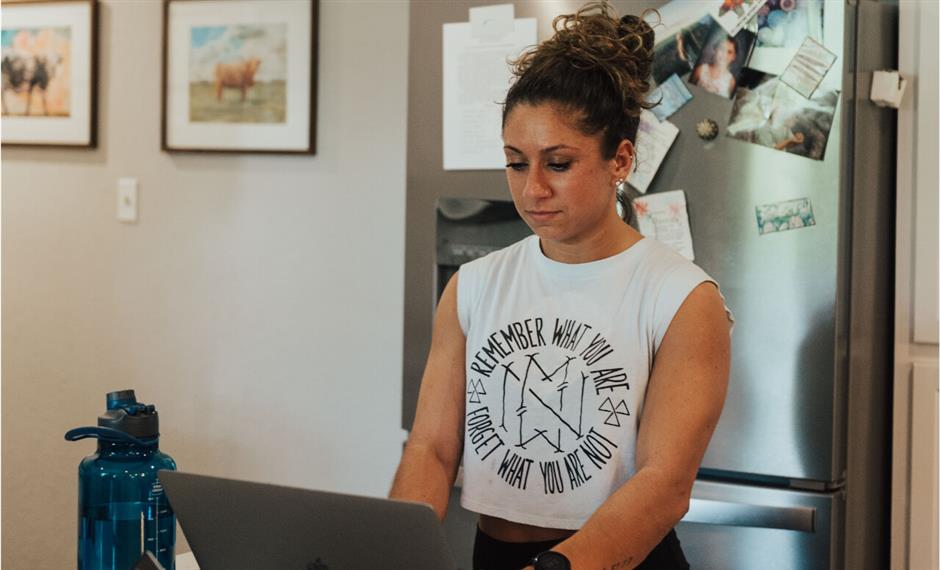
I sent out surveys to people who have enrolled in or were considering signing up for our WAG Coach Certification. Based on the feedback I got, a few things were very clear about this group of people:
- They want to make a difference.
- They are passionate about health and fitness. Nutrition has changed their lives and they want to pay it forward.
- Being able to make money by helping people with their nutrition would be the cherry on top!
In another blog, I discussed how to attract clients. This blog will dive deeper into the psychology and mindset needed for working with clients.
Clients From Different Walks of Life
Your clients will have unique personalities, mindsets and motivations for committing to a nutrition program. They will come from a variety of experiences, have different jobs and face obstacles that are individual to them.
One of the many benefits of being a nutrition coach is getting the opportunity to meet so many amazing people.
This is also where things get tricky. We need to blend the art of coaching with the science of nutrition. I have some great ideas to help you develop these skills.
Advertisement
Cultivate Connection
Over the past five years of coaching clients, one thing that I have seen to be true time and time again is this: The deeper you connect with your clients, the more trust you gain. More trust leads to stronger buy-in and ultimately better results.
One thing you must recognize: The work someone is signing up to do with you makes them feel vulnerable.
Think about it: You have a person who is coming to you for help. They are unsatisfied with their body, their discipline or another aspect of their current situation. Joining your program is a really big step and should be treated as such—for most people, this is really scary.
When you begin working with someone new, you get one shot at a first impression that sets the stage for your relationship. Your top priority should be to create a safe and judgment-free environment.
Advertisement
To do your job to the best of your ability, you need to know as much information as possible about your client and their experiences. You need to know about the binges, the mistakes and the moments where they feel like giving up.
In order to get that honesty from your client, they need to know they are safe to reveal that information to you.
Guide vs. Direct
There is something a little counterintuitive about being a nutrition coach. On one hand, people come to their coach looking for specific direction, answers and steps to take to get results.
On the other hand, sustaining results requires them to build skills, knowledge and understanding along the way.
Advertisement
Telling someone exactly what to do may help them get results in the short term, but it impairs their ability to learn in the long term. The goal is to help your client learn how to apply that knowledge in the moments when it’s needed (when you’re not around).
Seeing someone heading down the “wrong” path—especially in an area you have expertise in—will evoke your natural response to get out in front of them and redirect. You’ll be tempted to show them that there is a “better way” or try to help them see where they have “gone wrong.”
Usually this takes the form of unsolicited advice—and in many cases, this will create the opposite result of what you intended.
Have you ever been given advice that you knew was meant with the best of intentions and that could potentially benefit you—but still felt defensive and resistant?
I always keep this quote in the back of my mind: “Try not to do something for others that they can do for themselves.” This is challenging to do, but it’s very important when coaching clients toward achieving long-term results.
Advertisement
Here are some of the most effective ways to build a connection with clients and help them reach their own conclusions:
Get to Know Them
You are the coach and they are the client. You may have more expertise in your field, but they are the expert on themselves.
Sometimes coaches confuse their role as guide with telling their clients exactly what to do.
Can you remember a time when someone gave you advice without really knowing you? Perhaps they corrected your form on a movement in the gym or insisted that you try eating more of XYZ.
Advertisement
Your initial reaction was likely to resist that advice, even if they were your coach, and even if part of you knew they were right. It is natural to want to resist unsolicited advice because it feels like an intrusion on your independence.
The key to being a great coach is to ask questions, get to know where people are coming from and to see them as an entire human being instead of just someone with certain goals.
Think about your role as if you were a tour guide. Yes, a tour guide knows the area better than the tourists and could create an entire itinerary with the best lookout spots. But the best tour guide takes time to consider the interests of the people going on the tour, and together, they decide what the best itinerary will be.
The framework that I use to help me connect with clients is the FORD system: Family, Occupation, Recreation, Dreams.
These are some major categories that you can use to guide conversation with your clients. Make a note of the names of their family members (spouse, children, pets). Ask pointed, specific questions about their occupation. Find out about their hobbies and interests. Get to know what their life vision looks like, beyond just nutrition.
Advertisement
This helps you build a deeper connection with your client by giving you a clearer big picture on who they are and what they do in their spare time. In addition, you’ll probably expose some potential obstacles your client will encounter (that you can support them through!).
Don’t be afraid to share a bit about yourself with them. They need to be reminded now and then that you’re a real-life human too!
Let Clients Make Mistakes for Themselves
This one is definitely easier said than done.
When I first started coaching, I suffered from what you would call the “righting reflex.” Basically, I wanted to fix what I thought was wrong with people to promptly set them on a better course. I relied heavily on telling them exactly what to do.
Advertisement
Soon I realized that this was not working. Clients would get defensive and do what they wanted to do anyway. This broke down our trust.
The best coaches know when to act—and when not to say anything at all.
Making mistakes and overcoming them on your own is part of learning and building confidence. This is best illustrated with an example:
A client recently told me they wanted to incorporate 30–60 minutes of cardio every day after months of putting their health and fitness on the backburner. I asked a couple of questions in return:
“What kind of cardio were you thinking of?”
Advertisement
“Do you think there is any way to make this goal simpler to ensure success?”
I was trying to help the client see for themselves that taking on 30–60 minutes of cardio per day is a big leap from not working out at all. I knew this was potentially setting them up for failure. I wanted to help the client avoid failure so we could keep their confidence and motivation intact.
The “righting reflex” started bubbling up in my belly—I wanted to suggest the goal of moving for 15 minutes per day (including walking as an option) as a smaller, more attainable goal.
I held back the urge to direct and just asked questions. They responded with:
“I could set a goal of 30 minutes of walking a day, but to be honest, I need to get my heart pumping and would way rather do cardio than walk. I personally don’t see it as an option.
Advertisement
Every part of my being knew that this was not going to go the way this client had planned. But the experienced coach in me knew that learning this lesson and feeling failure based on their own choices would be more meaningful than for me to tell them what to do.
I responded: “Okay! I am with you—let’s go for it.”
The next week, this client only did cardio on two out of seven days. Making their own decisions and feeling the emotions that came with struggling to succeed was powerful for them. They came back to me and asked for my advice. They knew I was not judging them and felt ready to take on my suggestions.
Sometimes the most powerful lessons don’t come from the things you tell clients to do, but the times you don’t tell them what to do.
Advertisement
Make Your Client the Hero
Every nutrition coach has had the experience where they see one of their clients succeed, and they truly feel the emotions coming with the success. Your heart rate increases, a huge smile comes onto your face and you are overcome with joy. You can’t help but feel like you were partly responsible for that success.
When I first started coaching, I wanted to take credit for that success. I wanted to get congratulations too! After all, it was me who taught them all the skills to be able to achieve their success, right?
Here’s an example:
I had a client who checked in after the holidays, and for the first time in their life, they managed to eat in a way that allowed them to enjoy themselves without binging. They had so much pride in their newfound freedom and none of the guilt (or the additional pounds) from years past.
Part of me felt like I deserved at least some of the credit for this client being able to feel this successful, and I was even searching for ways to point it out when they didn’t thank me for my lessons. I would say something like, “Yes! This is what I have been trying to teach you all along.”
Advertisement
Slowly, I realized that this approach was hindering my ability to be a great coach. This isn’t about me. It actually has very little to do with me. I am not the one doing the work, changing my whole life and putting in the hard work day-to-day.
When I zoomed out and removed my ego from the equation, I saw that, as a coach, I am really playing a small role in the larger transformation that is occurring.
If you really want to connect with your clients, find any way you can to let them know they are the hero. Give them praise for doing the hard work (not just for their results) whenever you can. Expecting credit is a quick way to deteriorate your relationship and lower your client’s confidence in themselves.
Anyone can be a coach—but I know you want to be a great coach. They say the fastest path to progress is learning from other people’s mistakes without having to make them yourself. If you really take on the lessons above and learn from the mistakes I’ve made, you’ll be way ahead of the game.
Get a WAG Coach
Working Against Gravity has led the macro tracking and health space for over a decade. Our team doesn’t just understand the science of nutrition—we’ve spent years mastering the art of tailoring it to fit your life. That means no cookie-cutter plans, just real strategies that have worked for over 30,000 people.
Choose from our membership options and start working with an expert 1-on-1 coach today.



